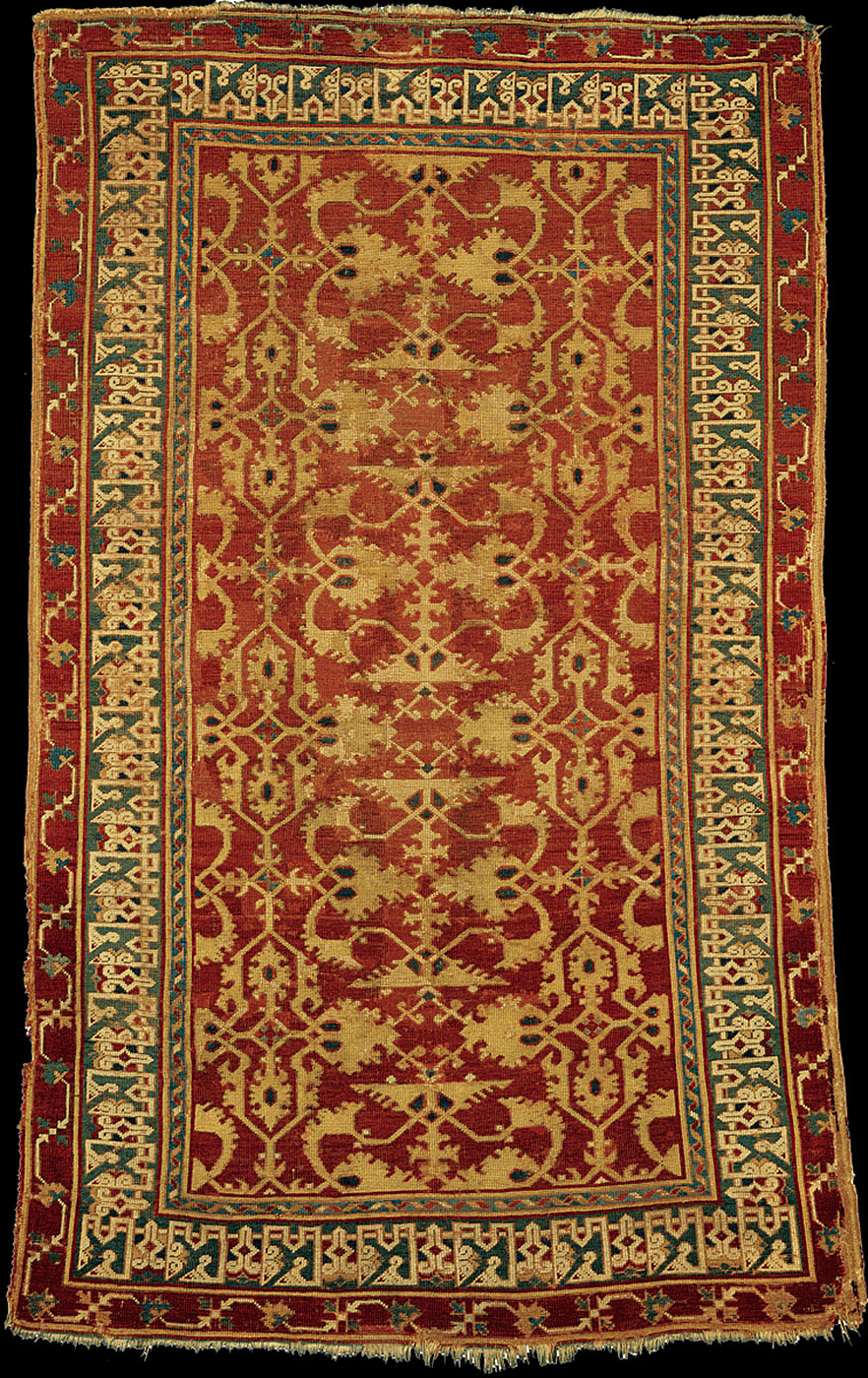
|
Kuba Konagkend rug / Quba Xan Qonaqkənd xalçası The rug has been woven in a village located in the Absheron peninsular by a local woman at her house as a natural part of her daily family routine Code: KUKON03 Size: 100x163cm Size (ft): 3'3"x5'4" Area: 1.63 m2 Density: 150 000 knots per square meter (33x45), totally ~240 thousand knots Dyes: 100% natural dyes: madder, dyer's woad, pomegranate skins, weld, walnut husks. Materials: Handcarded and handspun wool for pile, wool warps and two shots of ivory wool wefts Hand Woven in Azerbaijan, dated 1436 (2015) Design: The dark indigo blue field with Konagkend design of angular panel vine and scrolling motifs, in an aqua green Kufic main border between reciprocal skittle-pattern stripes and diagonal striped "Pakhlava" (National Azeri layered pastry with walnut filling) motif minor borders and outer barber-pole stripes Description: The rug features a simplified version of the classic Konaghend design, an intricate mosaic of interwoven elements based on conjoined hexagons. The Konaghend pattern is arguably the most intricate and complex of all Caucasian field designs. It is almost certainly rooted in the 'Lotto' designs of sixteenth-century Turkish Ushak rugs from Turkey/Anatolia (an intricate lattice tracery pattern featuring conjoined hexagons; so called because of its depiction in paintings by the sixteenth-century artist Lorenzo Lotto). Various bird and animal forms may be identified in Konaghend patterns; whether these are intentional trompe l'oeil or accidental imagery on the part of the weaver. It has some unusual features, such as the field design of confronting chicken or rooster forms. |
 confronting chicken or rooster forms  An Ushak rug depicted in Lorenzo Lotto's "The Alms of St Anthony", 1542. Basilica dei Santi Giovanni e Paolo, Venice. see the full image of the painting here  "Lotto" Ushak rug with a stylzed kufesque border, Anatolia, 16th century |
Contact us for more information about this rug

.jpg)
.jpg)
.jpg)
.jpg)
.jpg)

|
For more information about the above rug or to place an order please email vd@azerbaijanrugs.com (Baku, Azerbaijan) or ra@azerbaijanrugs.com (San Francisco Bay Area). We will get back to you within 24 hours or less. |